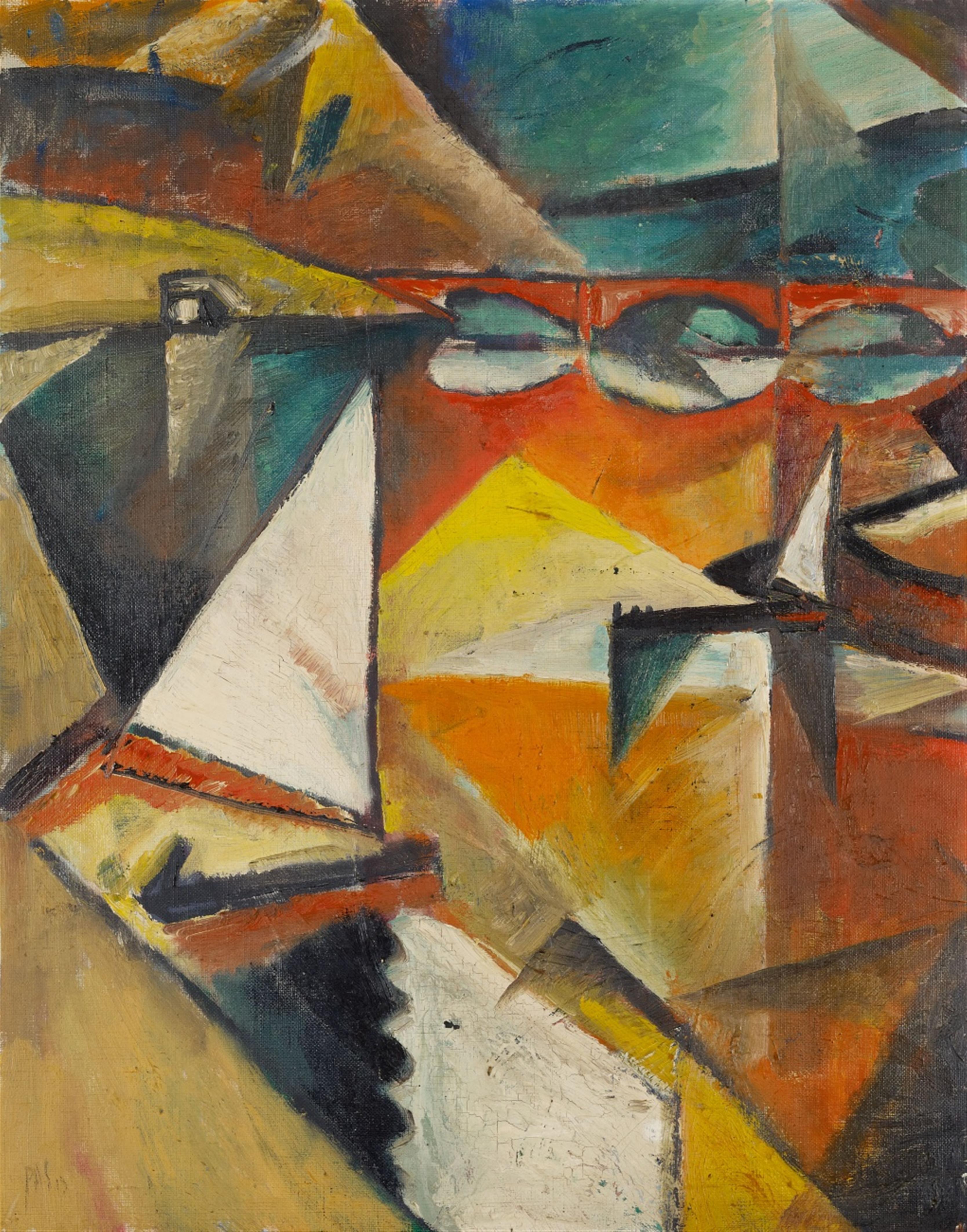Paul Adolf Seehaus
Segelboot vor Brücke
1913
Oil on canvas, mounted on board 53.4 x 42.1 cm Framed. Monogrammed and dated 'PAS 13' in black lower left. - Occasional light craqueleur and minimal surface rubbing.
Paul Adolf Seehaus was a part of the narrower circle of the “Rhineland Expressionists” gathered around August Macke, who had also grown up in his hometown of Bonn and with whom he had been bound by friendly and artistic ties since 1910. Macke had included the art history student in the 1913 exhibition “Rheinischer Expressionisten” presented by Cohen, and the work of the artist, who had just turned 22 at the time, was also presented at the “Erster Deutscher Herbstsalon” in Berlin. The painted oeuvre of Seehaus, who died young in 1919, is largely unknown in terms of its full range and it remained inaccessible to the public. Paul Ortwin Rave, a boyhood friend, paid homage to Seehaus with a first overview of his work in 1925 (Wallraf-Richartz-Jahrbuch, vol. 2, 1925, pp. 181 ff.) and introduced his essay with these lines: “Those painters of a new visual conviction whom Germany lost in the disastrous years of the war, a Franz Marc and August Macke - Seehaus is to be included among them as their equal. Young and full of that sense of life felt by a new generation believing in its calling, building up a different - its own - world against the ossified and antiquated attitudes: it was in this first flush of their flowering that one after the other sank to the ground. As the last of them - the din of the war's tumult had scarcely faded away - Seehaus died.” “Segelboot vor Brücke” presents a work from a private collection, a work that was significant for the artist and one that was not catalogued by Rave - coming out of the former private milieu of the artist, it is one of the rare works from his oeuvre to enter the market at all.
Seehaus, who felt a thorough bond to nature, was above all an intensive landscape painter. The element of water was rarely permitted to be absent from his paintings - the sailor was lastingly fascinated by rivers, rocky coasts and ships and boats under way - Rave speaks of a “lyric poet of the landscape”. In the present abstract composition, individual motifs like the boats, bridge, shore and hills are indivisibly united with the artist's new, formally abstract will to create form. In only a few years, following the formative experience of the 1912 exhibition of the Sonderbund and under the path-breaking aegis of August Macke, Seehaus enthusiastically took in the tendencies of the contemporary international art scene and sought to deal with them in his own way. In the present example of his work he sets out from the motif and develops the abstract-spatial composition out of the objective form of the subject, utilising a luminous, prism-like tonality in the manner of Delaunay. The different colours are optically bound together in the luminous brightness of the white sections of planes, here in the pure white of the sails. We sense the artistic aspiration that linked him with his friend August Macke in that decisive year of 1913.
Catalogue Raisonné
Dering G 15
Provenance
From the artist's estate; Private possession, South Germany
Literature
Peter Dering, Paul Adolf Seehaus (1891-1919), Leben und Werk, Bonn 2004, p. 55 with illus. p. 54

